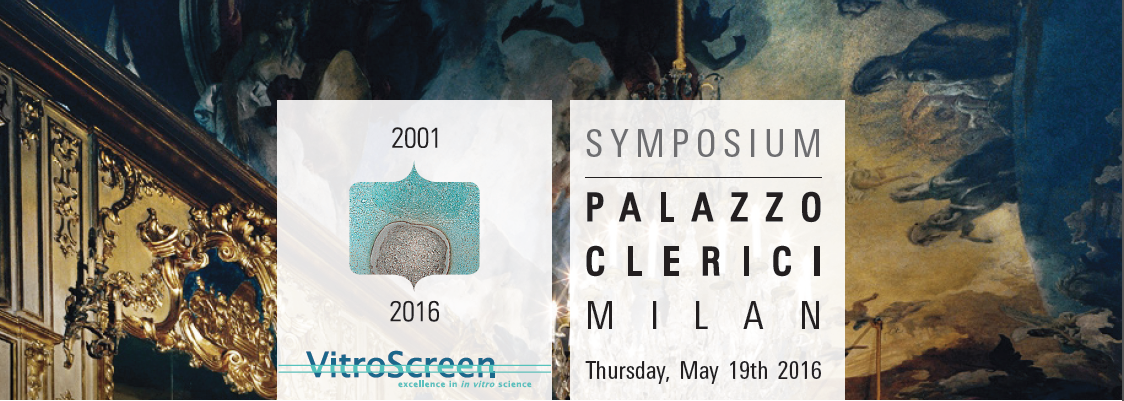On May 19th VitroScreen organized an international Symposium on “Mucosal immunity and in vitro science” in Milan at the historic Palazzo Clerici with its world famous Tiepolo’s Gallery to celebrate its 15th anniversary.
The Symposium aimed at further developing the knowledge on how the human mucosal immune system plays a key role for the health and well-being of humans and analyzed the role played by in vitro science in understanding these mechanism in preclinical research.
Intruducing the Symposium, VitroScreen’s CEO Marisa Meloni, highlighted the Company’s vision not only to replace in vivo tests on animals and clinical trial on humans with in vitro experimental models, but also to foster an evolutionary approach to pre-clinical and toxicological evaluations. This approach, based on more predictable and reproducible technologies delivers value to different industrial sectors, encompassing pharma, cosmetics, nutitional and chemical. Professor Anna Maria Castellazzi (Centro Interuniversitario di Immunità e Nutrizione, Pavia University) analyzed the importance of the microbiota in close contact with the intestinal mucosa as a defense system against potentially immugenic or pathogenic factors which are present in the lumen.
The theme of mucosal immunity was deeply explored by the speakers focusing on the impact of microbiota and immuno mediated responses on different body barriers.
Carolina Devastato (Angelini SpA) dealt with the highly complex vaginal ecosystem and shared the results of a research jointly carried out with VitroScreen. The vaginal microflora has been reproduced on a vaginal epithelial model colonized with Lactobacillis and Candida Albicans. Christian Pellevoisin (Episkin Academy) underlined how human reconstructed skin and in vitro epidermal models allow the study of the interactions between the skin and the residential microbiota and the impact on skin functions in a reproducible and controlled environment closed to the in vivo situation. Professor Stefano Barabino (Genoa University) focused on how the tear film, lacrimal gland, cornes and conjunctival epithelia and Meibomian glands work together as a functional unit to provide an efficient system. He further introduced a dry eye model based on in vitroreconstructed human corneal epithelium and showed through SEM analysis results how natural polymers interact on the ocular surface. Samuel Constant (Epithelix), an expert on respiratory in vitro models, shared a comparative study on the infectivity and replication of the most frequent human respiratory viruses using standardized in vitro reconstructed human airways epithelia (Mucilair) and highligthed how the model is a robust, reliable and relevant tool for antiviral drug development. Barbara De Servi and Federica Varriale(VitroScreen) shared the development of a co-culture model including Caco2 and THP-1 cells to study the interactions between inflammatory pathways, microbiota species and pathogens at molecular and ultrastructural levels. At the round table professor Thomas Hartung (John Hopkins University, Baltimore) discussed about the evolution of molecular research in the last decades and highligted the importance of new methodologies substituting and complementing traditional animal tests. His intervention summarized the lessons learned from the development, validation and acceptance of alternative methods for the creation of new approaches such as organo-typic cultures.
Beside the unquestionable value of the scientific discussions and presenttion, the participants were delighted to attend the marvellous flute concert by the world renown Maestro Andrea Griminelli who, through the unparalleled harmony of his flute stengthenes VitroScreen’s motto: the art of Innovation!
